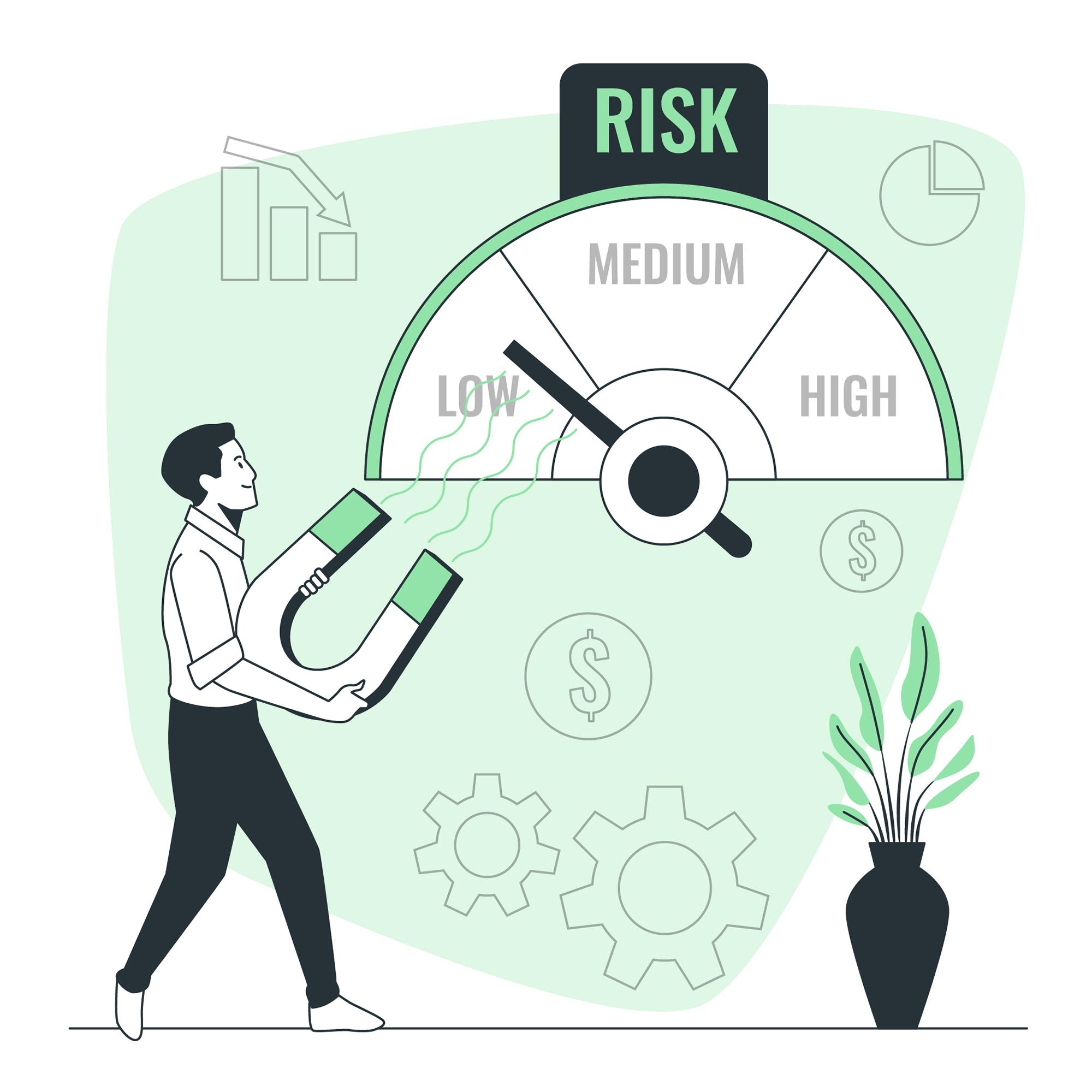Straw Man Accounts in AML
Discover the ins and outs of strawman accounts in this comprehensive guide tailored for AML professionals. Explore the definition, characteristics, and role of straw man accounts in money laundering activities. Learn how to detect and prevent their use, and gain insights into implementing a risk-based approach and leveraging advanced technologies to combat this pervasive financial crime.
 Written by Erling Andersen
Written by Erling Andersen
Welcome to our comprehensive guide on straw man accounts in the field of Anti-Money Laundering (AML). As AML professionals, it is crucial to understand the intricacies and risks associated with straw man accounts, which are often exploited by criminals to facilitate illicit activities such as money laundering and fraud. This article will explore straw man accounts, their characteristics, detection methods, and preventive measures. By profoundly understanding this topic, you will be better equipped to identify and combat money laundering schemes effectively.
Understanding Straw Man Accounts
A straw man account refers to a fraudulent practice where an individual or entity, known as the straw man, is used as a front to hide the true identity and intentions of the actual beneficiary or account holder. This deceptive technique allows criminals to obscure the origins and destinations of illicit funds, making it challenging for authorities and financial institutions to trace and prevent money laundering activities.
Straw man accounts typically exhibit several distinct characteristics. First and foremost, they involve using false identities, fictitious names, or stolen identities of unsuspecting individuals. These accounts may be opened using forged documents, such as fake IDs or utility bills, which further adds to the detection complexity. Additionally, straw man accounts often display unusual or high-volume transaction patterns, aiming to disguise illicit funds within legitimate financial activities.
Role of Straw Man Accounts in Money Laundering
Strawman accounts serve as a crucial component in the money laundering process. Criminals utilize these accounts to integrate illicit funds into the legitimate financial system, making them appear legitimate assets. Money launderers attempt to distance the illegal proceeds from their illicit sources by layering transactions and introducing complex financial maneuvers. Strawman accounts play a pivotal role in this layering stage, allowing criminals to obfuscate the audit trail and confound investigators.
Moreover, straw man accounts enable criminals to access various financial services and instruments, such as wire transfers, credit cards, or loans. This further facilitates the conversion of illicit funds into seemingly legitimate assets, which can be freely used or reinvested without raising suspicion. Finally, the flexibility and anonymity of straw man accounts make them attractive tools for money launderers across various illicit activities, including drug trafficking, corruption, and organized crime.
Key Indicators
Money launderers often employ sophisticated methods to bypass AML controls. Nevertheless, several patterns often emerge with Straw Man Accounts, such as:
- Frequent large transactions: A sudden influx of large transactions, particularly ones that seem out of place given the account holder’s typical financial behavior, could indicate using a Straw Man Account.
- A high volume of third-party transactions: If an account sees a high volume of transactions involving third parties, this may also raise red flags.
- Rapid movement of funds: Rapid movements, such as quick deposits and withdrawals, can be a common sign of money laundering.
Detecting Straw Man Accounts
Transaction Monitoring Systems
In the battle against money laundering, financial institutions rely heavily on sophisticated transaction monitoring systems. These systems employ advanced algorithms and artificial intelligence to analyze vast amounts of financial data in real-time, aiming to identify suspicious activities, including using straw man accounts.
Transaction monitoring systems flag transactions with specific red flags commonly associated with the straw man account. For example, these red flags may include a sudden increase in transaction volumes, multiple accounts linked to a single identity, frequent transfers to high-risk jurisdictions, or inconsistent account activity compared to the customer’s profile. By leveraging these technologies, AML professionals can more efficiently detect and investigate potential instances of straw man accounts.
Enhanced Due Diligence (EDD)
Financial institutions should implement robust Know Your Customer (KYC) and Enhanced Due Diligence (EDD) procedures to mitigate the risks of straw man accounts. EDD goes beyond the standard KYC requirements by subjecting high-risk customers to additional scrutinies, such as those involved in complex transactions or operating in high-risk jurisdictions.
During the EDD process, institutions conduct more extensive investigations, including gathering information on the beneficial owners of accounts, verifying the authenticity of provided documents, and assessing the business rationale behind transactions. As a result, financial institutions can strengthen their defenses against straw man accounts by implementing specific EDD protocols and effectively identifying suspicious activities.
Preventive Measures Against Straw Man Accounts
Staff Training and Awareness
One of the most crucial preventive measures against straw man accounts is the training and awareness of frontline staff within financial institutions. Therefore, AML professionals should conduct regular training sessions to educate employees about the risks associated with straw man accounts, red flag indicators, and the importance of following proper KYC and due diligence procedures.
By fostering a culture of vigilance and equipping staff members with the necessary knowledge and skills, financial institutions can enhance their ability to detect and prevent the exploitation of straw man accounts. Continuous training and awareness programs also ensure that employees stay up-to-date with evolving money laundering techniques and regulatory requirements.
Collaboration and Information Sharing
Given the transnational nature of money laundering, collaboration and information sharing among financial institutions and regulatory authorities are vital in combating straw man accounts effectively. In addition, establishing strong communication channels and sharing relevant intelligence can help identify interconnected networks of straw man accounts and unravel complex money laundering schemes.
Financial institutions should actively participate in forums, working groups, and information-sharing platforms facilitated by regulatory bodies and industry associations. By collaborating and pooling resources, AML professionals can stay ahead of criminals and collectively work towards creating a robust defense against money laundering activities involving straw man accounts.
Implementing a Risk-Based Approach (RBA)
Implementing a risk-based approach (RBA) is essential for AML professionals to combat the risks associated with straw man accounts. RBA allows financial institutions to allocate resources and focus on the highest-risk areas, including the detection and prevention of straw man account-related activities.
Risk Assessment and Categorization
The first step in implementing RBA is conducting a thorough risk assessment of customers, transactions, and jurisdictions. Financial institutions can categorize their customer base into risk tiers by assessing various risk factors, such as the customer’s profile, transaction patterns, and the geographic location of counterparties.
High-risk customers, including those with complex ownership structures or operating in high-risk jurisdictions, require enhanced due diligence and closer monitoring. Medium-risk customers may warrant standard due diligence procedures, while low-risk customers can undergo streamlined processes. By categorizing customers based on risk profiles, institutions can allocate resources efficiently and focus on the areas that pose the most significant threats.
Ongoing Monitoring and Suspicious Activity Reporting
Under the RBA framework, financial institutions must implement robust ongoing monitoring procedures to detect and report suspicious activities related to straw man accounts. Monitoring customer transactions, account activity, and changes in behavior can provide valuable insights into potential instances of money laundering through straw man accounts.
AML professionals should establish clear criteria for identifying suspicious transactions, including red flag indicators for straw man accounts. Unusually large or frequent transactions, transfers to high-risk jurisdictions, and patterns inconsistent with customer profiles should be thoroughly investigated. Institutions should promptly file suspicious activity reports (SARs) with the relevant authorities to initiate a further investigation if suspicions arise.
Technology and Data Analytics
Advancements in technology, particularly data analytics and artificial intelligence, have revolutionized the AML landscape. Leveraging these tools can significantly enhance the detection and prevention of straw man accounts. By analyzing vast amounts of data and identifying patterns and anomalies, AML professionals can uncover hidden relationships and detect suspicious activities that may indicate using straw man accounts.
Implementing advanced analytics systems and technologies allows for more accurate risk assessments, real-time transaction monitoring, and proactive identification of potential straw man account-related activities. These technological advancements enable institutions to stay ahead of increasingly sophisticated money laundering schemes and react swiftly to mitigate risks.
Final Thoughts
Strawman accounts pose significant challenges to the integrity of the financial system and the effectiveness of anti-money laundering efforts. As AML professionals, it is crucial to remain vigilant and proactive in detecting and preventing the exploitation of straw man accounts. By leveraging advanced technologies, implementing robust due diligence procedures, and fostering collaboration, we can effectively mitigate the risks associated with straw man accounts and safeguard the integrity of the global financial system.
Remember, staying informed, continuously updating your knowledge, and actively participating in the fight against money laundering are essential to maintaining the trust and security necessary for a healthy financial environment. Together, we can make a difference in the ongoing battle against money laundering and the misuse of straw man accounts.
Accelerate Your AML Efforts with Kyros AML Data Suite
In the ever-evolving landscape of financial crime, the detection and prevention of Straw Man Accounts are challenging yet critical components of an effective Anti-Money Laundering (AML) program. As we’ve learned, the consequences of failing to detect these accounts can be far-reaching, from reputational damage to significant regulatory penalties.
Recognizing this, we believe the Kyros AML Data Suite provides an essential solution.
Harness the Power of Kyros AML Data Suite
Our solution employs advanced technology to facilitate a more accurate and efficient analysis of transaction data, aiding in the swift identification of patterns and anomalies that could signify Straw Man Account activity. By offering a potent blend of machine learning and artificial intelligence, the Kyros AML Data Suite ensures your institution stays ahead in the battle against money laundering.
Book a Demo Today!
We invite you to experience firsthand how the Kyros AML Data Suite can revolutionize your AML practices and fortify your defenses against Straw Man Accounts. So book a demo with us today at Kyros AML and take a pivotal step towards safeguarding your institution.
FAQs
What is a Straw Man Account in the Context of money laundering?
A Straw Man Account is a financial account set up and used to conceal the actual account holder’s identity, typically to facilitate money laundering or other illicit activities. The report is usually operated by a ‘straw man’ or ‘nominee’ who could knowingly participate in the illegal activity or unknowingly exploit it for their identity.
How can financial institutions detect and prevent the use of StrawMan Accounts?
Financial institutions employ a variety of Anti-Money Laundering (AML) measures to detect and prevent the use of StrawMan Accounts. These include Know Your Customer (KYC) and Customer Due Diligence (CDD) procedures to verify the identity and understand the financial behavior of customers, regular transaction monitoring to identify unusual or suspicious activity, and leveraging advanced technologies such as machine learning and artificial intelligence for enhanced anomaly detection.
What are the consequences for financial institutions if they fail to prevent money laundering through StrawMan Accounts?
Failure to prevent money laundering through StrawMan Accounts can have severe consequences for financial institutions. These can include significant reputational damage, loss of customer trust, regulatory penalties such as hefty fines and sanctions, and potential negative impacts on the institution’s future business opportunities.
How does the Kyros AML Data Suite help detect StrawMan Accounts?
The Kyros AML Data Suite leverages advanced machine learning and artificial intelligence technologies to analyze transaction data effectively. It can identify patterns and anomalies that might signify Straw Man Account activity, enhancing the ability of financial institutions to detect and prevent such illicit practices.
How can I learn more about the capabilities of the Kyros AML Data Suite?
To learn more about how the Kyros AML Data Suite can support your institution’s AML efforts and combat StrawMan Accounts, we encourage you to book a demo with us. Visit Kyros AML to schedule your demo today.
Share article on
